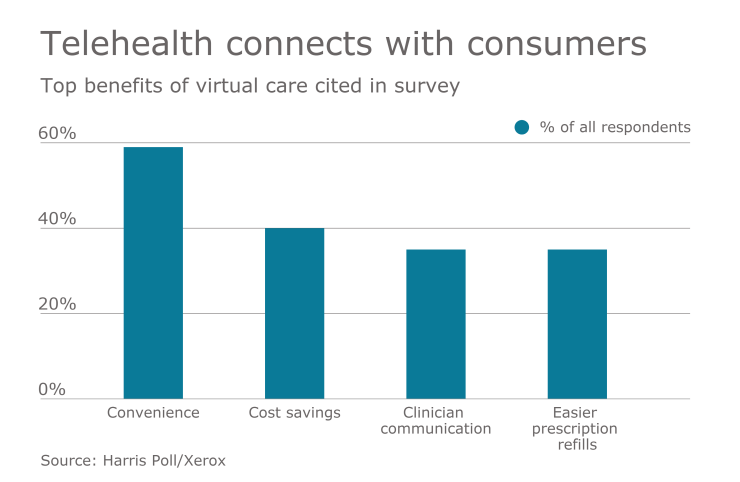I’m sure you’re all too aware that there are several trends taking place in the United States that are making it harder for Americans to find appropriate healthcare. Longer doctor wait times,
We need different and faster ways to seek medical care and get medical advice — and employers need to do their part to help. Providing alternative care methods can not only be a life-saver for employees, but also has the potential to deliver cost savings to both workers and employers.
Here are three strategies for employers to help employees access care.

1. $0 visit fee primary care visits. Instead of an employee having to wait several days or even weeks to visit their primary care physician, provide 24/7 access via phone/video visits within minutes. It’s estimated that two-thirds of medical issues could be diagnosed this way — all the way to a prescription, if medically necessary. As the doctor shortage continues to grow, these wait times will expand, driving many to skip care altogether. The key factors in driving employee utilization are a $0 visit fee and a turnkey engagement system.
2. Personalized medical advice from specialists. Roughly one-third (35%) of the 20 billion searches for health information online came from Americans trying to self-diagnose their medical conditions. These impersonal searches often end in the dreaded “it could be cancer” statement driving more people to unnecessary medical visits, including expensive trips to the emergency room. Sometimes employees need answers to medical questions, second opinions and triage for specialist issues. With an email service to a variety of specialists, employees get 24/7 e-visit access to real doctors who respond directly to medical questions within a few hours and provide personalized advice. Employees can even upload test results and pictures for a more personalized and accurate interaction.
3. Employee advocate. When the size of a network is reduced, employees can find it more difficult to locate an in-network provider for medical service. Having a personal advocate to do the research, transfer medical records from previous providers and even schedule appointments can make a network change smoother for employees while reducing unnecessary out-of-network charges. This issue will continue to be magnified by the doctor shortage issue that I mentioned above.
I experienced this issue firsthand a few months ago when my family was going through a network change. We had to find a new pediatrician for our children since our old doctor was not included in the new network. In the beginning, my wife and I took on this task ourselves, but the first four or five pediatricians we contacted weren’t accepting new patients. So, I turned to my advocate (which I should have done from the beginning). Within a day, he had located a high-quality pediatrician in my network who was accepting new patients.
Access to personalized healthcare that’s convenient and affordable is becoming more difficult for the average American, but with the implementation of strategies I mentioned above, you can reduce this burden for your employees. Longer wait times, shrinking networks and the overall shortage of physicians will continue to close the normal doors to access healthcare for employees. It’s time to adopt these new strategies that employees will actually use and provide them with some new “open doors” to access the healthcare system.





